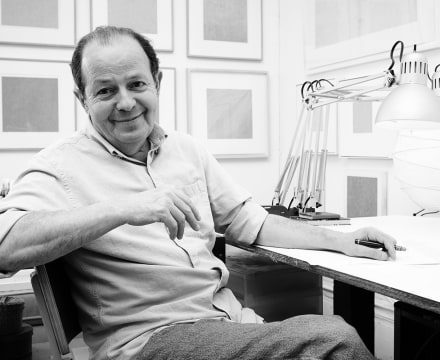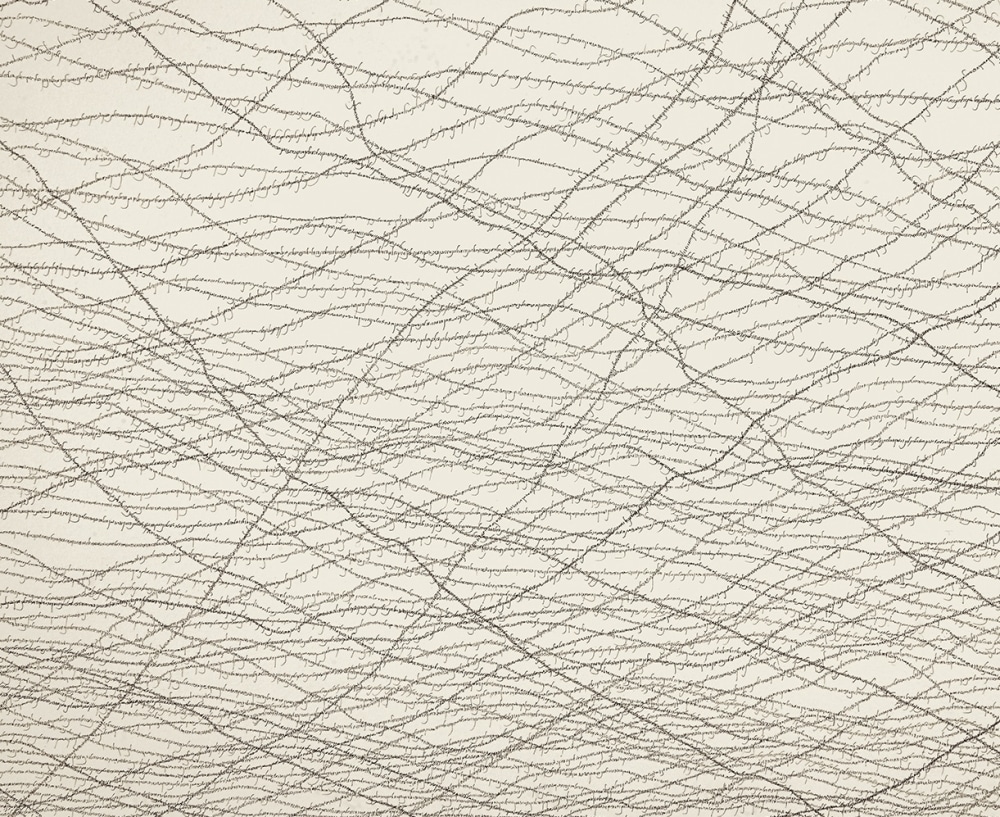

Jacob El Hanani's splendid drawings suggest that all art is autobiographical and that abstraction is a part of human nature. Potentially paradoxical, these cojoined ideas are also linked to another contradictory pair: our simultaneous need to reveal and cocneal ourselves. El Hanani's meticulous pen-and-ink (his only medium) drawings are encoded self-expression, an aesthetic of secrecy.
For example, The Hebrew Barbed Wire (2013) appears at a distance to be a mass of loosely woven barbed wire. We see the wire, and we see through the tangle. Inspected at close range the barbed wire turns into the letters of the Hebrew alphabet. To inscribe those letters is to evoke a millenial tradition; to run them into barbed wire is to allude to past horros and current restraints. The alphabet simultaneously protecs and imprisons. At the same time, the drawing floats before us, visually divorced both from barbed wire and Hebrew, a beautiful object.
Less obviously related to El Hanani's personal past is Gauze (2011), a drawing of a piece of textile. Certainly the relationship between text and textile comes to the point of this superb piece, but gauze is the sheer fabric we use to bind wounds and is thought to get its name from Gaza, where it was made. An excellent catalogue essay by the late Arthur Danto accompanies the exhibition.